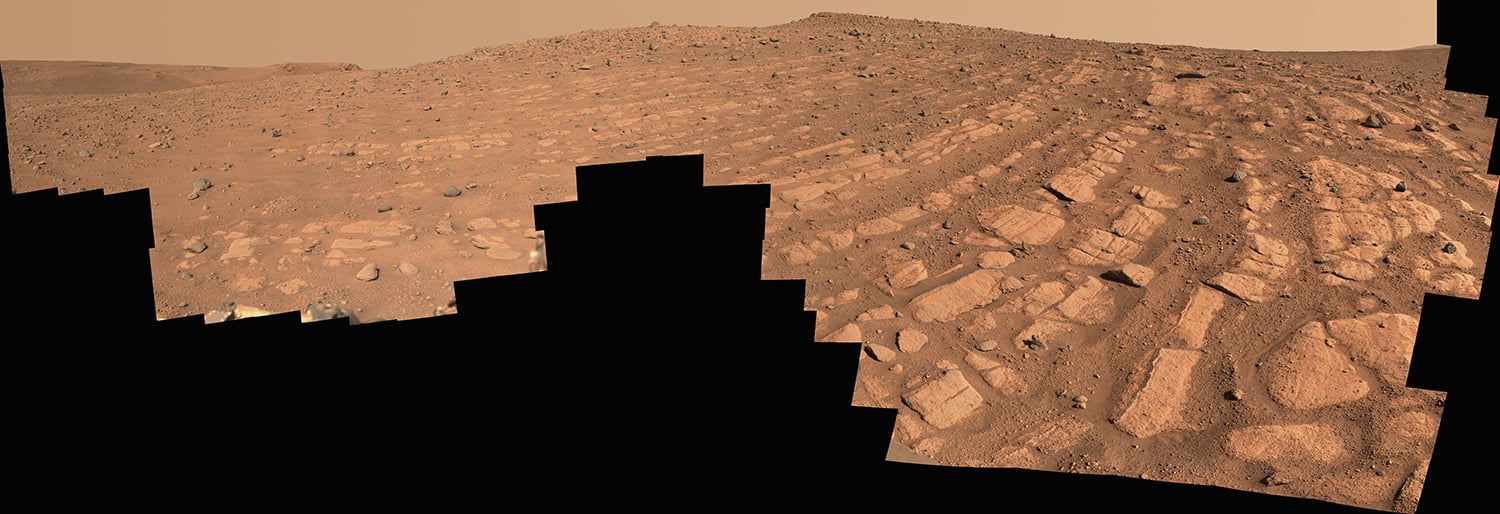“Our water-soaked world, teeming with life and unique in the universe as far as we know, is something of a mystery—we’re not sure how all this water got here.”
—Stefanie Milam, James Webb Space Telescope planetary scientist.
New images from planet Mars and from Comet Read inside the orbit of Jupiter point to the existence of water in these unlikely places.
Water and Rivers on Mars
The existence of water on Mars is not a new discovery. Scientists have been analyzing such evidence since 2000. According to Alberto Fairen, an astrobiologist at the Center of Astrobiology in Spain and Cornell University in New York, “The surface of Mars today is extremely dry, but there are lots of clues pointing to a much wetter past."
Why should we care if there is water on Mars? Water is always associated with the possibility of life, and researchers have been looking for this evidence for decades. An additional consideration concerns the future of manned expeditions to Mars. Such expeditions would be easier if water exists on Mars: it can be used as fuel (when split into hydrogen and oxygen) and acts as a shield against radiation.
Last year in 2022, news broke that certain features of the Southern ice cap suggested that liquid water may still exist under the surface of that region. This finding emerged after data from the Mars Global Surveyor satellite was re-examined. Scientists concluded that patterns in the shifting height along the surface of the ice cap matched mathematical models of how the ice cap would be shaped if a body of water existed beneath its surface.
Then earlier this month, scientists revealed compelling evidence that, at some time, “a high-energy river” flowed over the surface of Mars. The picture below was pieced together with hundreds of images from the Perseverance land rover. Perseverance landed in the Jezero Crater in 2021 and since then has been sending data from its seven scientific instruments, including its camera, the Mastcam-Z instrument.
This mosaic of images was captured over several days at the beginning of March 2023 in an area of the Jezero Crater known as Skrinkle Haven. It reveals bands of curved rock layers previously only seen from space. Scientists now believe these “curvilinear units” were likely formed by a fast-moving river. According to Libby Ives, a postdoctoral researcher at NASA’s Jet Propulsion Laboratory, which operates Perseverance, the presence of coarse sediment grains and rocks 2.5 to 10 inches in size “indicate a high-energy river that is truckin' and carrying a lot of debris. The more powerful the flow of water, the more easily it’s able to move larger pieces of material.” Ives has studied earth-based rivers and is delighted to “see processes that are so familiar” on another planet.
 Curved Bands of Rocks at 'Skrinkle Haven' / Image Credit: NASA
Curved Bands of Rocks at 'Skrinkle Haven' / Image Credit: NASA
Water Vapor in Asteroid Belt Comet
The main asteroid belt is a region of the solar system between the orbits of Jupiter and Mars. Home to asteroids—small irregularly shaped bodies—a new class of objects known as main-belt comets were added to its list of inhabitants in 2006. These comets are asteroids that occasionally sport a halo and tail like a comet. Previously, scientists believed that comets only existed in the Kuiper Belt, a region beyond the orbit of Neptune. Known as “dirty ice balls,” comets display their “tails” when they come closer to the sun, vaporizing the frozen material on their surface. Scientists speculated for years that perhaps space ice was responsible for the appearance of halos and tails in these main-belt comets, but there was no proof.
Until now.
New data from Webb’s NIRSpec (Near-Infrared Spectrograph) instrument has confirmed the existence of water vapor around Comet Read, one of the first so-called main belt comets.
Download the full-resolution image from the Space Telescope Science Institute.
According to NASA, this discovery indicates “that water ice from the primordial solar system can be preserved in that region.” What is mystifying is the lack of any detectable carbon dioxide, which usually makes up about 10% of the material that burns up to produce a comet’s halo and tail. Michael Kelley of the University of Maryland, the lead author of the study, offered two possible explanations for the missing CO2: either carbon dioxide was not available when the asteroid formed or the carbon dioxide vaporized over billions of years.
This image of Comet 238P/Read was captured by the NIRCam (Near-Infrared Camera) instrument on NASA’s James Webb Space Telescope on September 8, 2022. It displays the hazy halo, called the coma, and tail that are characteristic of comets, as opposed to asteroids. The dusty coma and tail result from the vaporization of ices as the Sun warms the main body of the comet. / Credits: NASA, ESA, CSA, M. Kelley (University of Maryland). Image processing: H. Hsieh (Planetary Science Institute), A. Pagan (STScI)
Commenting on the importance of the finding, Stefanie Milam, James Webb Space Telescope planetary scientist, stated:
Understanding the history of water distribution in the solar system will help us to understand other planetary systems, and if they could be on their way to hosting an Earth-like planet.
The search for the origin of Earth’s abundant water is ongoing. When we gaze into the night sky, these new discoveries lead us eventually to ponder the question, “Are we alone in the universe?”
For a closer look at the origin of water, you can read about a Harvard astronomer’s observations in Habitable Worlds and The Origin of Water.

